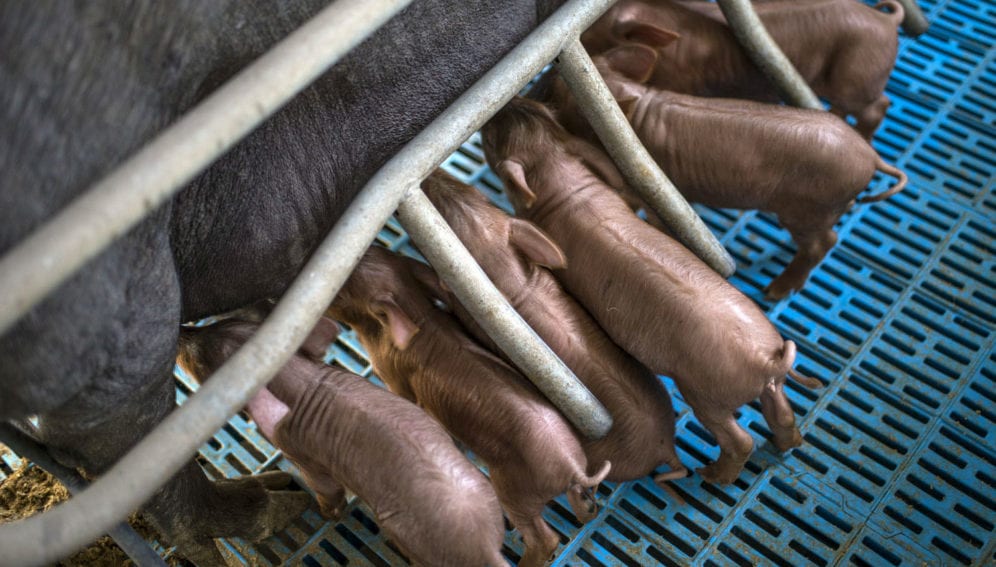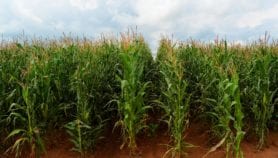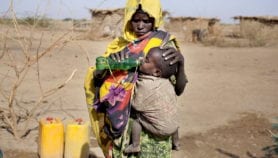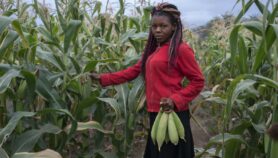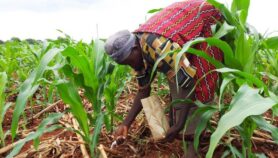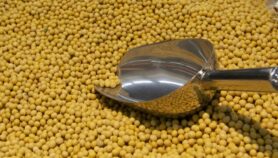Send to a friend
The details you provide on this page will not be used to send unsolicited email, and will not be sold to a 3rd party. See privacy policy.
[NAIROBI] Tackling global nutrition and food security challenges requires a need for countries to shift to climate smart food systems including consuming low-carbon food sources, a report says.
The new report published this week (28 November) says that in 2017 about 820 million people worldwide were malnourished, and cites climate variability and extremes resulting from increased greenhouse gas emissions as a major cause of increased global hunger and severe food crises.
According to the UK-based Adam Smith Institute, lab-grown meat could cut greenhouse gas emissions from livestock by up to 96 per cent by helping free-up land to feed growing population.
“Lab-grown meat, algae, and appealing insect-based foods are some examples of potential low-carbon food options.”
Robin Fears, European Academy Science Advisory Council
“About one-third of all greenhouse gases are produced by food systems,” explains Robin Fears, programme director, European Academy Science Advisory Council, a member of regional science academies involved in generating the report. “Lab-grown meat, algae, and appealing insect-based foods are some examples of potential low-carbon food options”.
Fears explains that ambitious efforts to mitigate greenhouse gas emissions would not only benefit the environment but also human health, adding that food consumption and consumer choices contribute to increased greenhouse emissions.
”Governments need to take a pro-active approach by informing consumers and giving them incentives to eat healthier diets that also have less of an impact on the environment,” Fears tells SciDev.Net.
“There needs to be a food systems approach that links up climate change, agriculture, health, and nutrition.”
The report describes global perspectives on the opportunities for future research and innovation on food and nutrition security and agriculture.
“Climate change issues are relevant to many of the Sustainable Development Goals, and agriculture and food systems are vital vehicles for achieving them,” says the report.
The report was prepared by the InterAcademy Partnership, in collaboration with four parallel regional academy networks: the Network of African Science Academies, the Association of Academies and Societies of Sciences in Asia, the Inter-American Network of Academies of Science, and the European Academies’ Science Advisory Council.
Jemimah Njuki, a senior programme specialist at Canada’s International Development Research Centre tells SciDev.Net that besides addressing climate smart innovations, it is important to address gender-based barriers in Africa and Asia.
“As we build a more sustainable food system, we must address the gender-based barriers that still face women, who are the majority of the labour force in agriculture in Africa and Asia,” she explains.She also notes that natural science and social science work together and that technology cannot work in isolation.
“Natural sciences might be the driver of technological innovations but whether these technological innovations are useful and make a difference in the lives of people requires social science research to understand what people’s priorities are…and what institutional and policy innovations are required to drive change,” she explains.
This piece was produced by SciDev.Net’s Sub-Saharan Africa English desk.
References
Opportunities for future research and innovation on food and nutrition security and agriculture: The InterAcademy Partnership's global perspectives (InterAcademy Partnership, 28 November 2018)


